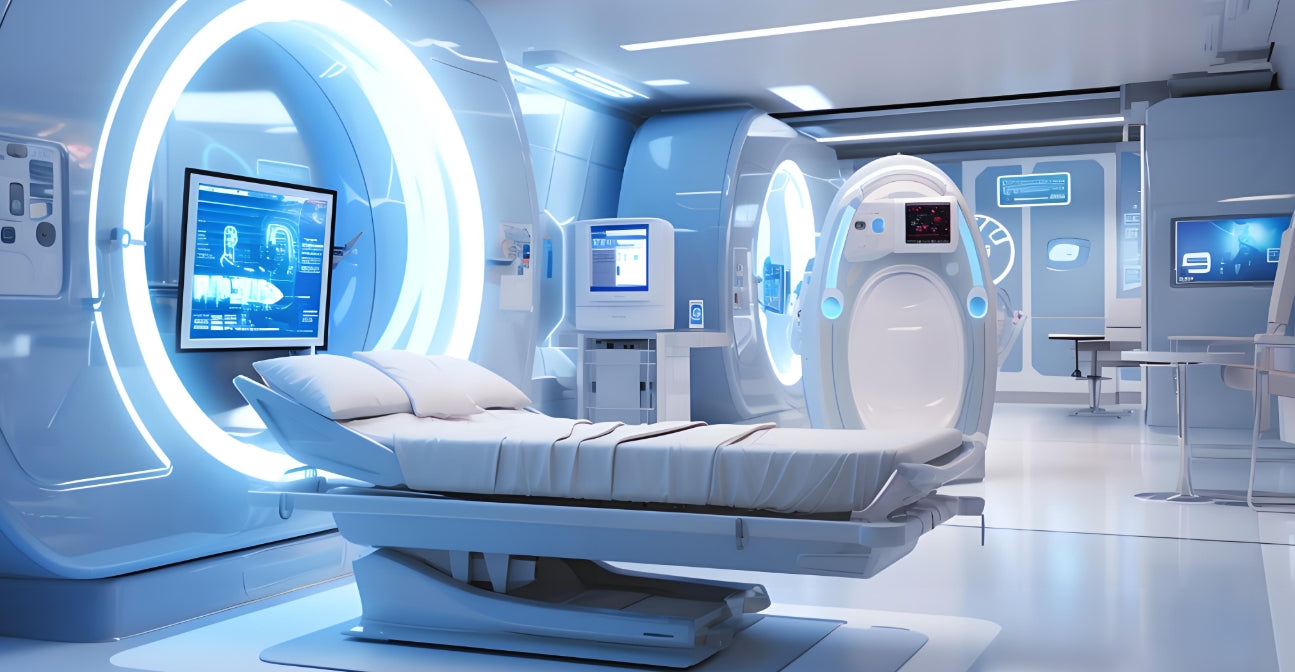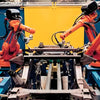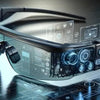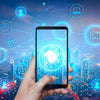How ToF Camera Tech Is Transforming Contactless Medical Sensing

In the post-pandemic healthcare landscape, there’s an accelerating shift toward contactless monitoring, driven by the need for safer, smarter, and more efficient medical practices. Whether in intensive care units (ICUs), neonatal wards, or remote health terminals, the demand for non-invasive, low-risk physiological monitoring is pushing innovation in sensor technologies. At the heart of this transformation is the Time-of-Flight (ToF) camera, a next-generation 3D sensing device that is revolutionizing how hospitals acquire and analyze vital signs.
What is a ToF Camera Used For?
A Time-of-Flight (ToF) camera is a cutting-edge imaging device that acquires precise depth information by measuring the time it takes for emitted near-infrared light pulses to bounce back from objects in the environment. This principle enables the creation of real-time 3D depth maps, providing a comprehensive spatial understanding that goes far beyond the capabilities of traditional 2D imaging systems.
With its exceptional features—including high-speed real-time response, ultra-low latency, and robust resistance to environmental interference—the ToF camera is unlocking a wide spectrum of transformative applications across various industries. However, its impact is particularly profound in the medical and healthcare sector, where the need for contactless, accurate, and continuous monitoring has grown exponentially in recent years.
Here are some key use cases where ToF cameras are making a significant difference:
-
Gesture Recognition and Body Motion Capture: In modern medical environments such as smart rehabilitation clinics or telemedicine platforms, ToF systems enable precise gesture-based control of interfaces, allowing patients to interact with systems hands-free. They also support motion tracking for physical therapy, enabling clinicians to assess recovery progress remotely or in real time.
-
Facial Recognition and Access Control: Hospitals and secure medical research zones are adopting ToF-based facial recognition for hygienic, contactless identity verification. This enhances operational security while reducing the risk of disease transmission through shared surfaces like fingerprint scanners or keypads.
-
Autonomous Robot Navigation and Collision Avoidance: ToF sensors act as the "eyes" of intelligent medical robots, enabling them to perform autonomous ward rounds, medication delivery, or patient assistance with spatial awareness and obstacle detection. This is especially crucial in environments like isolation wards, where minimizing human presence is a priority.
-
Smart Home Healthcare Integration: In the growing field of home-based care, ToF-enabled devices allow for intuitive, posture-based control of lighting systems, emergency alerts, or medication reminders. For instance, a patient sitting up in bed might trigger a wellness check notification, or a fall might automatically activate a call to caregivers.
-
Contactless Health Monitoring: One of the most game-changing applications of ToF cameras is their ability to perform non-invasive monitoring of physiological parameters, such as respiration rate, sleep posture, micro-movements, and fall detection. These systems can continuously analyze patient conditions without wires, electrodes, or wearable devices—making them ideal for elderly care, neonatal units, and ICU environments.
-
Visitor Behavior Analysis and Heatmapping: In smart hospitals or medical exhibition spaces, ToF systems track and analyze visitor flows, creating real-time heatmaps that inform spatial planning, emergency evacuation protocols, or interactive displays. Understanding crowd movement also aids in infection control by identifying high-traffic touchpoints.
Thanks to their millimeter-level precision, wide field of view, and immunity to ambient light changes, ToF cameras are now considered indispensable in medical scenarios that demand real-time 3D interaction, continuous monitoring, and hygienic, non-contact data acquisition. As healthcare continues to embrace digital transformation, ToF technology is not only enhancing diagnostic capabilities but also improving patient safety, comfort, and overall care efficiency.
Rising Demand for Contactless Monitoring in Clinical Settings
The integration of ToF 3D cameras into smart hospitals is rapidly accelerating. These cameras detect subtle chest and body surface movements—such as those caused by breathing and heartbeat—without the need for physical contact. Compared to traditional ECG patches or wired sensors, ToF-based systems reduce patient discomfort, eliminate the risk of electrode detachment, and lessen the burden on nursing staff.
In ICUs, patients are often unconscious or immobilized. ToF depth sensors enable around-the-clock contactless monitoring of respiratory rate, heart rate, and posture changes without disturbing the patient. In neonatal intensive care units (NICUs), this non-invasive method avoids skin damage, infection risks, and discomfort for vulnerable infants. During outbreaks of contagious diseases such as COVID-19, contactless ToF solutions also protect frontline medical personnel by enabling remote patient monitoring.
Furthermore, ToF camera systems can connect with Hospital Information Systems (HIS) to support automatic data upload, trend visualization, and alert notifications—laying the groundwork for digital ICUs and intelligent patient rooms.
How Does ToF Technology Monitor Vital Signs?
Using near-infrared light, ToF cameras generate dynamic 3D depth maps that record microscopic surface displacements caused by breathing or heartbeats. This core mechanism forms the foundation of non-contact vital sign monitoring. Practical use cases include:
-
Respiratory Rate Detection: Rhythmic chest and abdomen movements during breathing create periodic depth map fluctuations. ToF sensors extract these variations and apply signal processing algorithms (e.g., Fourier transform) to compute real-time breathing rates and detect abnormal patterns such as apnea or labored breathing.
-
Heart Rate Monitoring: Despite being subtle (around 0.1 mm), heartbeats can be detected with high-resolution ToF cameras focused on the chest or carotid regions. Advanced image stabilization and AI-driven filtering help isolate heartbeat patterns, making it ideal for neonatal care or critical patient monitoring.
-
Posture Recognition and Fall Detection: Full-body depth data enables posture analysis using machine learning. ToF systems recognize whether a patient is lying, sitting, getting up, or leaving bed—and trigger alarms in the event of dangerous behavior or extended immobility, preventing falls or pressure sores.
Compared to traditional 2D monitoring systems, ToF technology provides:
-
Ambient-light independence: Effective in dark, low-light, or backlit conditions thanks to its active illumination.
-
High spatial resolution and coverage: Enables panoramic sensing of entire bed areas.
-
Rich depth data: Supports AI modeling for personalized health insights and predictions.
Use Cases in ICUs, Neonatal Monitoring, and Remote Healthcare
Adoption of ToF-based sensing is growing rapidly across various healthcare environments, including:
1. ICU Monitoring
Patients in intensive care units often need uninterrupted observation. Traditional monitoring systems involve multiple contact sensors, which may cause irritation or interfere with sleep. ToF depth cameras, mounted unobtrusively in ceiling corners, can monitor chest movements and positional shifts, enhancing real-time physiological tracking while minimizing physical interference.
2. Neonatal Monitoring
Premature and full-term infants have fragile skin and heightened sensitivity to adhesive devices. ToF cameras enable gentle monitoring of breathing, sleep posture, and micro-movements—without physical contact. The system also alerts caregivers to potential dangers such as choking or unsafe sleeping positions, providing life-saving intervention windows.
3. Remote Healthcare and Home Monitoring
As telemedicine becomes mainstream, smart ToF-enabled devices are being deployed in homes to monitor heart rate, breathing, and bed-leaving behavior in elderly or chronically ill patients. Integrated with IoT and cloud platforms, these systems allow remote physicians or AI assistants to evaluate health conditions, send alerts, and provide continuous contactless care for people living alone or in recovery.
AI-Enhanced Health Monitoring: From Data to Decision
The fusion of ToF and AI transforms basic sensors into intelligent medical nodes capable of predictive diagnostics. Key developments include:
-
Behavior Modeling & Trend Analysis: AI can analyze long-term ToF data to identify individual health baselines. Deviation from expected patterns (e.g., reduced movement frequency or shallow breathing) triggers early warnings and supports preventative intervention.
-
Risk Prediction & Alerting: Deep learning models interpret micro-movements and posture shifts, converting them into semantic health events such as fall risk, suffocation warnings, or abnormal bed exits. These events can instantly notify caregivers via mobile apps or nurse stations.
-
Robotic Integration: Combined with platforms like ROS (Robot Operating System), ToF sensors enable hospital robots to perform autonomous ward rounds, vital sign scanning, and real-time patient status reporting, supporting collaborative care systems in smart hospitals and senior living communities.
Overcoming Challenges in Medical-Grade ToF Sensors
For ToF sensors to function reliably in clinical environments, they must exceed consumer-grade limitations. Key hurdles include:
1. High-Precision Sensing Architecture
While structured light or indirect ToF (iToF) works for general depth tasks, direct ToF (dToF) with SPAD (Single Photon Avalanche Diode) arrays and high-speed lasers is essential in medical scenarios. This combination achieves sub-millimeter precision needed for heartbeat detection and micro-movement tracking.
2. Chip-Level Reliability
Medical-grade ToF sensors must operate continuously for years under high temperature, humidity, and electromagnetic interference. Design features include on-chip thermal compensation, auto-calibration, and high-dynamic-range capture.
3. Regulatory Compliance & Data Security
To qualify as medical devices, ToF systems must meet international standards such as FDA Class II, CE MDR, and HIPAA/GDPR compliance. They also need traceable data pipelines, supporting clinical validation and integration into electronic health records (EHRs).
4. AI Edge Processing
To fully unlock the potential of Time-of-Flight (ToF) camera systems in medical environments, integrating them with AI-powered edge computing platforms—such as NVIDIA Jetson, Qualcomm Snapdragon, or ARM Cortex-A76 based System-on-Chips (SoCs)—has become a crucial architectural trend. These compact yet powerful processing units bring intelligence closer to the data source, enabling real-time, on-device analysis of high-resolution 3D depth data generated by ToF sensors. This edge-computing integration significantly enhances system responsiveness, data security, and overall efficiency in healthcare settings.
Key capabilities of such AI edge computing platforms include:
Real-Time Response for Emergency Alerts
In clinical environments such as ICUs, neonatal units, or elder care facilities, every second counts. Edge AI enables instantaneous detection and processing of critical health events—such as abnormal respiration patterns, prolonged immobility, or falls. Instead of transmitting raw video or depth data to cloud servers for processing, the system performs local inference using pre-trained neural networks. This drastically reduces latency and ensures that alerts—whether to nurse stations, mobile apps, or alarm systems—are issued in milliseconds, enabling faster clinical intervention and potentially saving lives.
Encrypted Local Storage to Prevent Data Leaks
Healthcare data, especially involving vital signs, patient behavior, and posture patterns, is highly sensitive and subject to strict privacy regulations like HIPAA and GDPR. AI edge devices support hardware-level encryption, ensuring that all recorded ToF data, processing outputs, and event logs are securely stored on-device. This reduces the risk of interception during transmission and minimizes reliance on external cloud services, making the system more robust against cyberattacks or data breaches.
OTA (Over-the-Air) Updates for AI Models and Firmware
To keep pace with evolving clinical needs and AI capabilities, these platforms support remote over-the-air updates. System integrators and hospital IT teams can deploy new machine learning models, firmware patches, or feature upgrades without physical access to the device. This allows continuous optimization of functions such as fall detection, respiration classification, or posture recognition, and enables personalization for different patient demographics—such as pediatric vs. geriatric monitoring—without hardware replacement.
By combining the depth-sensing power of ToF cameras with edge AI inference, healthcare facilities can deploy autonomous, intelligent sensing systems that are:
-
Reliable even in offline or low-bandwidth environments
-
Customizable through modular AI updates and parameter tuning
-
Scalable across diverse care settings—from hospital wards to home care units
This fusion of 3D vision and on-device intelligence is a cornerstone of the next-generation smart medical sensing network, enabling safer, faster, and more privacy-conscious contactless healthcare solutions.
5. Collaborative Sensor Ecosystems
Future ToF healthcare systems will combine depth sensing with temperature, humidity, audio, and ECG sensors, enabling multi-modal diagnostic tools. Custom AI models will adapt to patient demographics, such as infants, the elderly, or chronic disease sufferers.
Conclusion: ToF Cameras Lead the Next Leap in Smart Healthcare
As the medical industry transitions from reactive care to proactive health management, ToF camera technology is emerging as a cornerstone of this evolution. It enhances accuracy, improves patient comfort, and supports AI-driven insights in ways that traditional monitoring tools cannot.
With advances in 3D sensing, semiconductor technology, and AI ecosystems, ToF-based contactless monitoring is poised to become standard across ICUs, neonatal units, remote healthcare, and elder care. It’s not just a tool—it’s the intelligent 'eye' of tomorrow’s medical system, delivering safer, smarter, and more responsive healthcare experiences for all.
Robosense RS-lidar-M1/RS-lidar-M1 Plus 3D Vehicle grade intelligent solid-state LiDAR for autonomous driving
After-sales Support:
Our professional technical team specializing in 3D camera ranging is ready to assist you at any time. Whether you encounter any issues with your TOF camera after purchase or need clarification on TOF technology, feel free to contact us anytime. We are committed to providing high-quality technical after-sales service and user experience, ensuring your peace of mind in both shopping and using our products.







